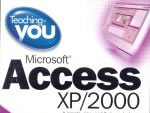
Access Tutorial

Microsoft Access is a 32-bit relational database management system (RDBMS). Access combines its database capabilities with the ability to build a complete front-end user application. This differs from Visual Basic and Powerbuilder as these programs require additional programming to integrate database management facilities in to the application.
Access duplicates in a PC environment what used to be using C and a lot of SQL. Although you can still write your own SQL statement, there is a windows driven query facility that makes creating queries much easier. Such not to be limited to a PC environment, Access also has the option of allowing you to connect to any databases on client/server database like an Oracle server.